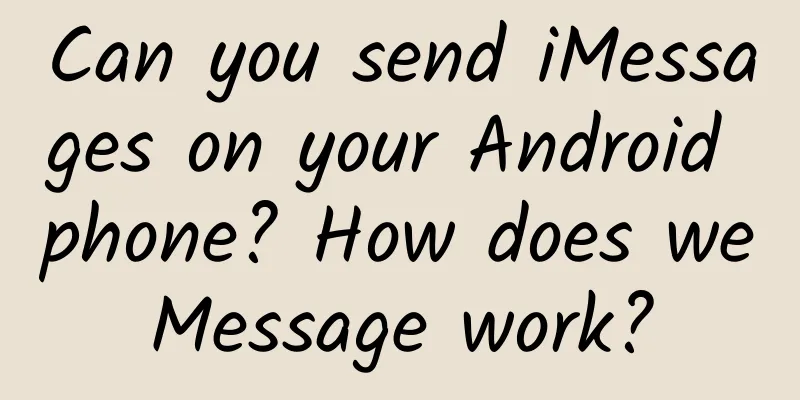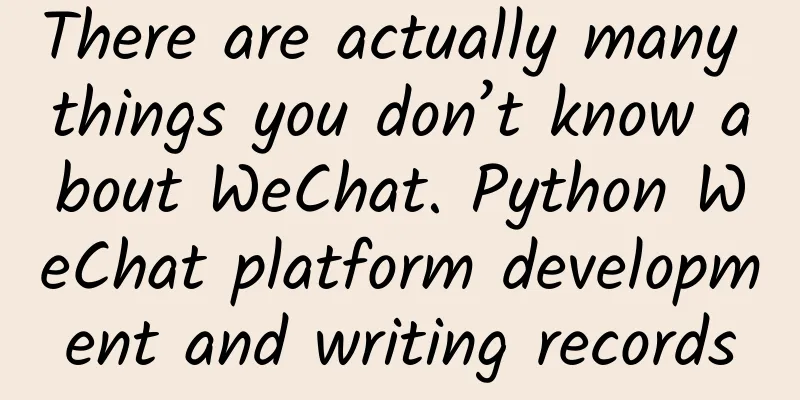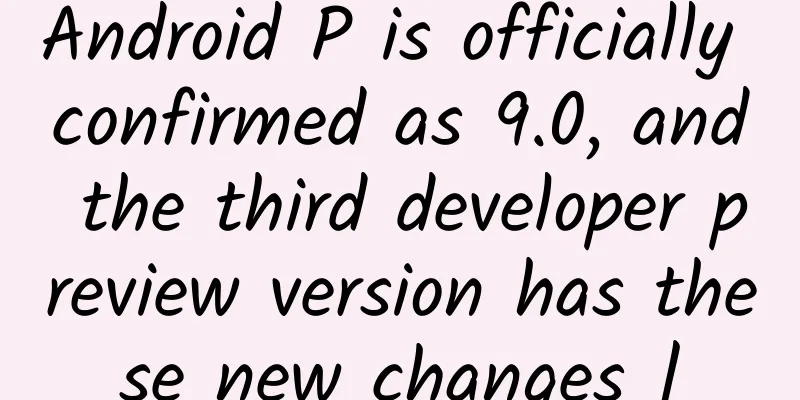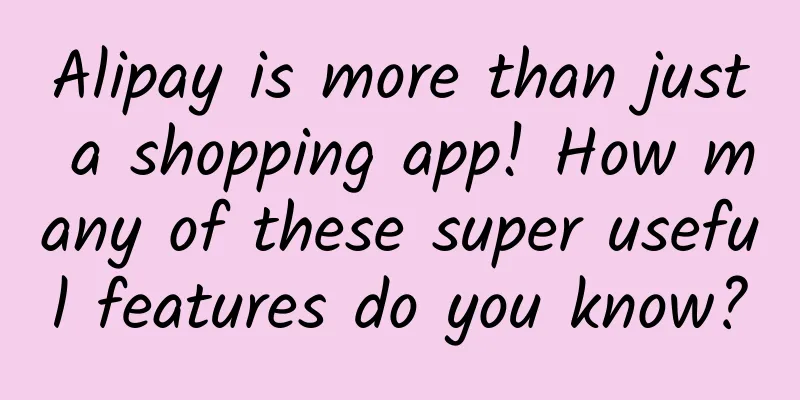Can you send iMessages on your Android phone? How does weMessage work?

|
iPhone to Android: But what about iMessage? Nowadays, choosing a mobile phone is actually choosing a platform. In other words, you need to decide how to smoothly migrate the services you used before to the new platform. Since there are quite a lot of migration solutions for switching from Android to iPhone (even Apple itself has launched a migration application on Google Play), the conversion cost is not high. But if you are used to the iPhone and the series of services provided by Apple, it becomes much more painful to break away from it and use Android. The first one to bear the brunt is the extremely convenient iMessage service. If you choose Mac as your computer and iPhone as your mobile device, then as long as you have a unified Apple ID, you can easily send messages to your iMessage friends. But if you change your phone to Android, then this service can only be used on the inconvenient Mac desktop - after all, iMessages can only be experienced in the Apple product ecosystem. So is there a similar solution that can break through this limitation? weMessage: iMessage client for Android A 17-year-old developer seems to have found a solution. The app he developed, called weMessage, is said to be able to break through many of Apple's restrictions. According to his description, weMessage can realize "instant" messaging with your iMessage friends on the Android platform, but this "implementation" has some inherent defects: you must use a Mac computer as a "communication relay" between iMessage services. Therefore, it is not difficult to understand the working principle of weMessage: In fact, it does not crack Apple's iMessage protocol, and there is no so-called reverse engineering. It only does one thing: forward iMessage information received on Mac to your Android phone through other communication protocols. The iMessage messages sent on Android are sent back to the Mac, and then "semi-automatically" sent from the Mac Messages app as an auxiliary function through a server-side program installed on the Mac. Simple principle, but the most complicated installation steps The principle is clear enough at this point, so if you want to experience iMessage on Android, you need to do two things: install the client and the Mac server. The client is not complicated. WeMessage is now available on the Play Store and can be downloaded for free. Don't open it immediately after downloading it, because we need to configure the server first. https://play.google.com/store/apps/details?id=scott.wemessage The server needs a Mac. First, download the Mac-related program from its official website. The downloaded file is a zip compressed package. Unzip it and set aside. Next, you need to change the default language of your Mac computer to English (yes, the weMessage server currently does not support Chinese language systems): open Preferences, in Language & Region, add "English" as the default language, and then restart the system. Next, also in the preferences, select the "Privacy" tab in "Security & Privacy", click the small lock in the lower left corner and enter the password to unlock it, then go to "Accessibility" and check "Terminal". To ensure everything goes well, considering that the server program needs to run on JDK, confirm the java version. Open Terminal and enter java - version to confirm that the openjdk version is not less than 7.x. Okay, then find the folder where the server program is stored, open the "run commend" file in the execution folder, and then enter your Apple ID and password in the opened terminal. After that, it will display "weServer started", indicating that the service on the Mac side has been successfully started. ***Go back to "Preferences" on your Mac, turn on the network and you can see the IP address of your Mac in the local area network. Just record it. Here, open the weMessage client on your Android phone, enter the Mac's IP address (server), Apple ID and password, and then you can see the weMessages message list page. Now you can finally send iMessage messages on Android! Is it really useful? I tried it on purpose After all this trouble, I believe that users with a little patience will probably be confused by the complicated setting process, so what is the final experience like? I tried to send an iMessage to my friend on my mobile phone, and I could see that the message was actually transmitted to the Mac via the wireless network, and then automatically sent on the message app interface through auxiliary operations: in other words, you are actually just controlling the phone to send the iMessage through the Mac, and the delay can be imagined. As for the client itself, since it does not integrate functions such as the address book, at least in my experience, sending messages becomes very troublesome: you need to know the other party's iMessage account and cannot directly search from the address book. And it lacks the rich functions of iMessage on iPhone, and can only be used as a temporary emergency tool to view iMessage information. Summarize When weMessage was first released, it was quite amazing, and many "ignorant" newbies felt that they had found a solution. However, after actual experience gradually revealed the working principle behind this application, we found that weMessage, as an iMessage client for Android, is actually just a "pseudo-***": it must rely on Mac as a relay, the server settings are extremely troublesome, and the client cannot be used directly independently. Therefore, iMessage services are still only available in the Apple ecosystem. If you really rely on these excellent services, you should think twice before switching mobile platforms. |
<<: iMessage's Emoji bug has existed for multiple versions
>>: iPhone X has a new way to play, this time you have to play games with your eyebrows: Rainbrow
Recommend
Collection level! Not only WeChat and Alipay, this article will show you all the mini program platforms
There are more and more platforms for mini progra...
Have you received any orders from Baidu AiPurchasing? Is Baidu Ai Purchasing effective?
Now many companies know that Baidu has launched a...
Yi Zhongtian's Chinese History: The Great Song Dynasty Reform
Yi Zhongtian's Chinese History: The Reform of ...
50 million alliance: 0 fans bring over 10,000 GMV to the community
Community introduction: How to quickly get more t...
How do product people quickly write in-depth product experience reports?
In this article, the author analyzes several high...
Cheating methods in APP promotion channels, how to prevent cheating in APP promotion?
Cheating often occurs in APP promotion channels. ...
Search Promotion | Four Principles of Data Analysis
Many friends want to learn data analysis, so I wi...
Xiaohongshu is back on the shelves, how to carry out promotion?
After 77 days since the Xiaohongshu APP was taken...
How to set the matching mode of oCPC/CPC keywords?
This article shares with you "How to set the...
10 steps to build a brand from scratch
This article can only share with you "how to...
Baoman CCO explains user operations for you from the definition, nature of work and workflow
As the CCO of Baozou, during my work at Baozou Co...
Xiaolu Emotional Love Army "Love Finger Male Needle"
Baidu network disk download location: i1-72-Xiaol...
Review: Baidu information flow delivery on social apps
Recently, I took over a Baidu information flow ac...
The impact of domain names and space on search engines
1. The impact of domain names on search engines (...
WeChat adds "Rush" status: based on Kris Wu
WeChat status is a new feature of WeChat. After w...









